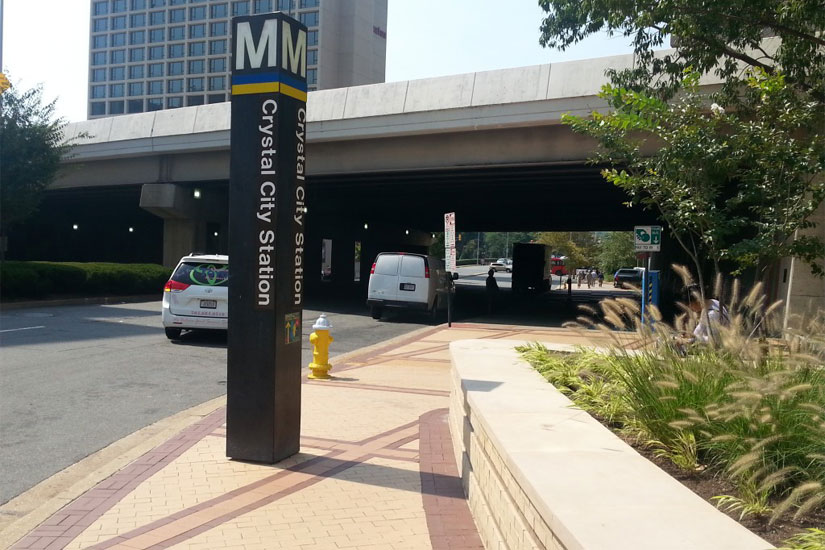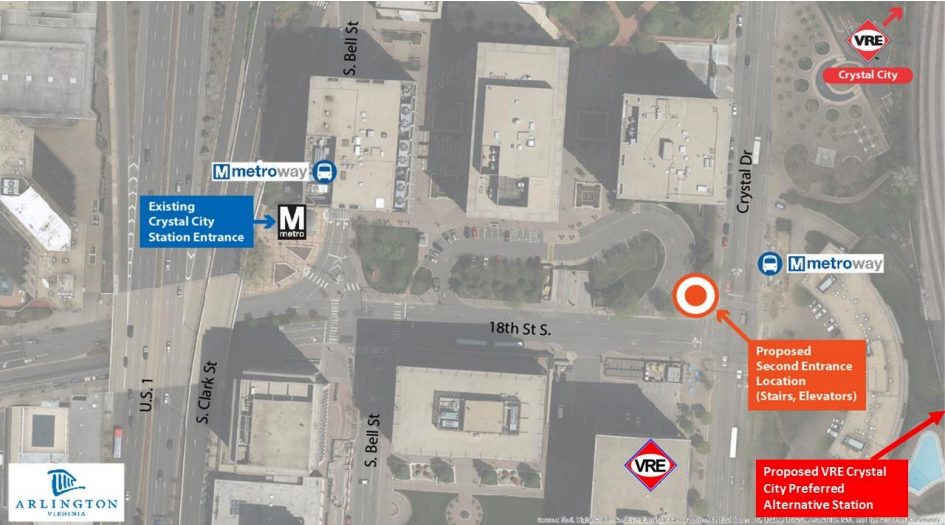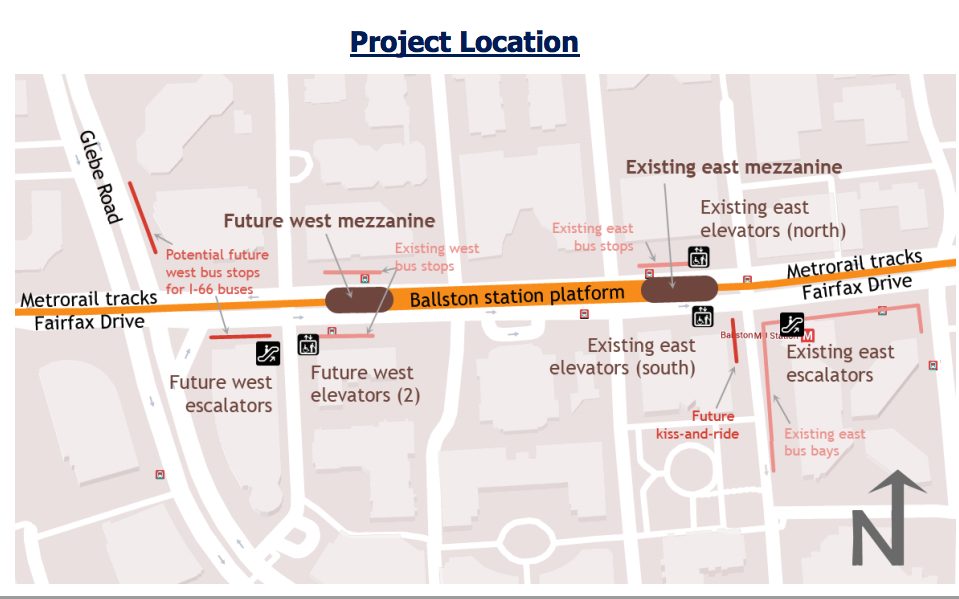A major funder of transportation projects across Northern Virginia isn’t giving up on Arlington’s long-stymied efforts to build second entrances for the Crystal City and Ballston Metro stations, though any substantial progress remains elusive.
For years, the county has planned on paying for the new entrances by pairing its own money with some funding from the Northern Virginia Transportation Authority, a group that doles out sales tax revenues to transportation projects around the region.
Transportation planners view second entrances at the stations as crucial to encouraging Metro ridership in each neighborhood, and coping with the rapid pace of development in both areas.
However, Arlington’s plans have come under some serious pressure along two fronts in recent months. The county’s declining revenues and rising expenses have forced officials to pare back funding for some long-range construction projects, and that’s included the second entrances at Ballston, Crystal City and East Falls Church.
Meanwhile, the NVTA took a major funding hit when the landmark deal struck by state lawmakers to provide dedicated funding for Metro diverted tens of millions away from the group each year, a move condemned by Democrats but insisted upon by Republicans as a way to fund Metro without raising taxes.
That’s prevented the NVTA from funding all the projects it might like, including the second entrances. Even still, Monica Backmon, NVTA’s executive director, says that the county remains well positioned to earn the cash it needs to complete the projects from her organization — though, perhaps, not as quickly as its leaders might like.
“When we’ve already invested in projects like these, we want to see them come to fruition,” Backmon told ARLnow. “We still believe in them.”
The second entrance in Crystal City seems particularly likely to earn a bit more cash from the NVTA in the near term, Backmon said. Her group could only hand out about $5 million for the effort in its most recent round of awarding funding for projects, which she expects will fund about “half of the design costs” for the effort.
The county is still settling on the specifics around the second entrance, though it will likely sit at the intersection of Crystal Drive and 18th Street S. Given the substantial new development JBG Smith is already plotting for that location, when combined with the close proximity of the Virginia Railway Express station, Backmon said the NVTA remains quite bullish on the project going forward.
“There’s a lot of development going on in the area, so we know there’s a need,” Backmon said. “Provided they’re advancing on the design work, they can come back and reapply for more funds.”
Backmon even expects that the NVTA could send the county the other half of that design funding as soon as next year. She plans to wait a bit to see what state officials might do — the county has applied for $78 million of the project’s $91 million price tag as part of the state’s “SmartScale” funding program, and the Commonwealth Transportation Board is set to make a decision on that cash by next June.
Then, in July, the NVTA will start its own funding process, allowing Backmon to see whether or not her group needs to step in to give Arlington a boost. By then, officials will also likely know whether they also need to prepare for Amazon’s arrival in Crystal City or not, another key variable in the discussion.
“The density in Arlington really is different than in the outside the Beltway localities,” Backmon said. “That project is important to relieve bottlenecks, on Metro and on roads.”
The process for finding funding for the Ballston second entrance is a bit murkier. The NVTA has already sent the county $12 million to fund a western entrance to the station, though that’s far short of the $72 million Arlington officials hoped to receive for the effort.
Backmon’s group declined to devote any additional cash to the Ballston project this summer, and she notes that the NVTA saw needs elsewhere that were “a little more pressing.” But county officials have been anxious to show some progress on the effort, not only to better prepare to cope with the slew of new developments on N. Glebe Road, but also to ensure that Arlington doesn’t lose out on the state funding it’s already received for the project.
Backmon says she can’t be sure whether the Ballston project will be a strong candidate to earn more NVTA money next year, but she is confident that the existing cash isn’t going anywhere.
“We haven’t given up on the project and still think it’s important,” Backmon said. “The fact that we’ve already invested $12 million in it speaks for itself… so we’re comfortable we’re in a place that the project is advancing. We’re not looking to take away any funds.”
Of course, it wouldn’t hurt the project’s chances either if state lawmakers acted early next year to restore the NVTA to its former funding levels.
She pegs the group’s current annual loss from the Metro funding deal at close to $102 million, a bit up from earlier estimates, and is desperately hoping that the General Assembly follows through on Gov. Ralph Northam’s proposal to bump up a few Northern Virginia tax rates to make the math work for the NVTA.
Northam and his fellow Democrats have already pledged to reexamine the issue next year, though, as Backmon acknowledges, any such effort “in an election year” for the General Assembly will be a tricky one.
“Our statewide funding pots are shrinking, but our needs are growing,” Backmon said. “We want to make sure this is on everyone’s radar, and that people understand that, while we made adjustments, we definitely want to be restored to where we were before.”




